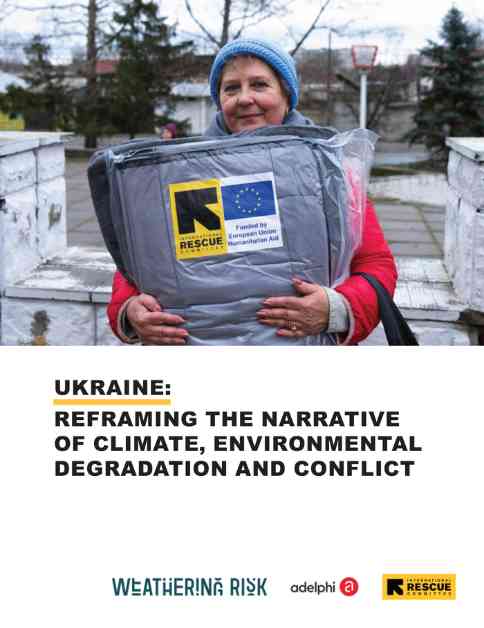The war in Ukraine, following Russia’s invasion in 2022, has brought significant attention to the human suffering and geopolitical consequences. However, the environmental and climate impacts of the conflict have been overlooked, especially concerning humanitarian needs. In the first year alone, the war led to a net increase of 120 million tonnes of greenhouse gases and caused over USD 57 billion in environmental damage (The New Humanitarian, 2024). Over the course of two years, this number rose to 175 million tonnes, surpassing the annual emissions of countries like the Netherlands (Ecoaction, 2024).
This level of emissions is equivalent to the combined carbon output of five Fragile and Conflict-Affected States (FCAS) on the International Rescue Committee’s Emergency Watchlist, including Haiti, Syria, Burkina Faso, Yemen, and Somalia (EDGAR, 2023). The impact of the conflict on the vulnerability of the affected population to environmental and climatic changes remains unclear, creating a gap in understanding that hinders effective climate-security risk-informed responses for humanitarian aid and post-conflict efforts.
It is crucial to reframe the narrative surrounding the conflict in Ukraine to include the environmental and climate dimensions. By addressing these aspects, we can better assess the long-term consequences of the war and develop more comprehensive strategies to mitigate its impact on both the population and the environment. Climate change is a global issue, and conflicts like the one in Ukraine only exacerbate its effects, making it essential to consider these factors in conflict resolution and post-conflict reconstruction efforts.
Additionally, the international community must prioritize addressing the environmental and climate impacts of conflicts like the one in Ukraine. By investing in sustainable and resilient infrastructure, promoting renewable energy sources, and supporting environmental restoration projects, we can not only mitigate the immediate damage caused by conflicts but also build a more sustainable future for affected regions.
In conclusion, the war in Ukraine has not only led to human suffering and geopolitical tensions but has also had significant environmental and climate consequences. By reframing the narrative to include these dimensions and taking proactive steps to address them, we can work towards a more sustainable and resilient future for conflict-affected populations.
